Concerto in Bb Major, K191 (score & parts) - BSN/BAND
Composer: Mozart, Wolfgang Amadeus
Publisher: TrevCo
Edition: 9028 - 68472
$90.00
for bassoon and band
by Wolfgang Amadeus Mozart (1756-1791) - Austrian composer
This set includes:
- one solo bassoon part
- one full score
- set of wind ensemble parts:
- two flutes
- two oboes
- clarinet 1
- clarinet 2
- clarinet 3
- bass clarinet
- alto saxophone
- tenor saxophone
- baritone saxophone
- two horns in Bb and F
- two horns in F (alt.)
- Trumpets in Bb
- trombone
- tuba
In transcribing the Mozart Concerto for Bassoon from the original orchestration of two oboes, two horns in Bb & F, and the standard strings there is always the issue of balance and sensitivity to the timbre and tessitura of the solo bassoon. All too often, some of the similar reed timbres in a band can relegate the sound of the bassoon to the background. The publisher's intent was to make an accompaniment that would allow the bassoon to stand out, while at the same time using a majority of the instruments found in the modern wind ensemble. In doing so the accompaniment during the solo bassoon passages is purposely light and should be performed with sensitivity, grace, and eloquence by the musicians. Additionally, the tutti sections that utilize the full ensemble should retain the classical balance and refinement of the period in which Mozart wrote this concerto. A full band fortissimo is never appropriate in this edition.
In transcribing the orchestra for wind ensemble, the publisher made the decision to retain the orchestra's oboe and horn parts as written by Mozart. For the oboe, there is no issue. However, as was the norm in Mozart's time, the horn parts were written for performance on a horn in the key of the concerto's movements. Hence the original horn parts in Bb (movements 1 & 3) and F (movement 2) have also been retained. An alternate part for Horns in F has been provided with the set. However, the tessitura of the horns is quite high and for younger players may be problematic, especially in the first movement. Therefore, in the first movement the trumpets have been given the similar horn parts and it may be preferable to have that movement performed with the trumpets and have the horns tacet. That decision should be made at the discertion of the conductor.
A solo bassoon part is provided with corresponding rehearsal marks and measure numbers. However, the bassoonist may wish to use his or her own edition, which is, of course, perfectly all right. Similarly, cadenzas should be performed at the will of the soloist.
Lastly, the accompaniment is written for a cadre of twenty musicians, as noted in the score and parts. It is the intent and hope of the transcriber that this balance has been retained.

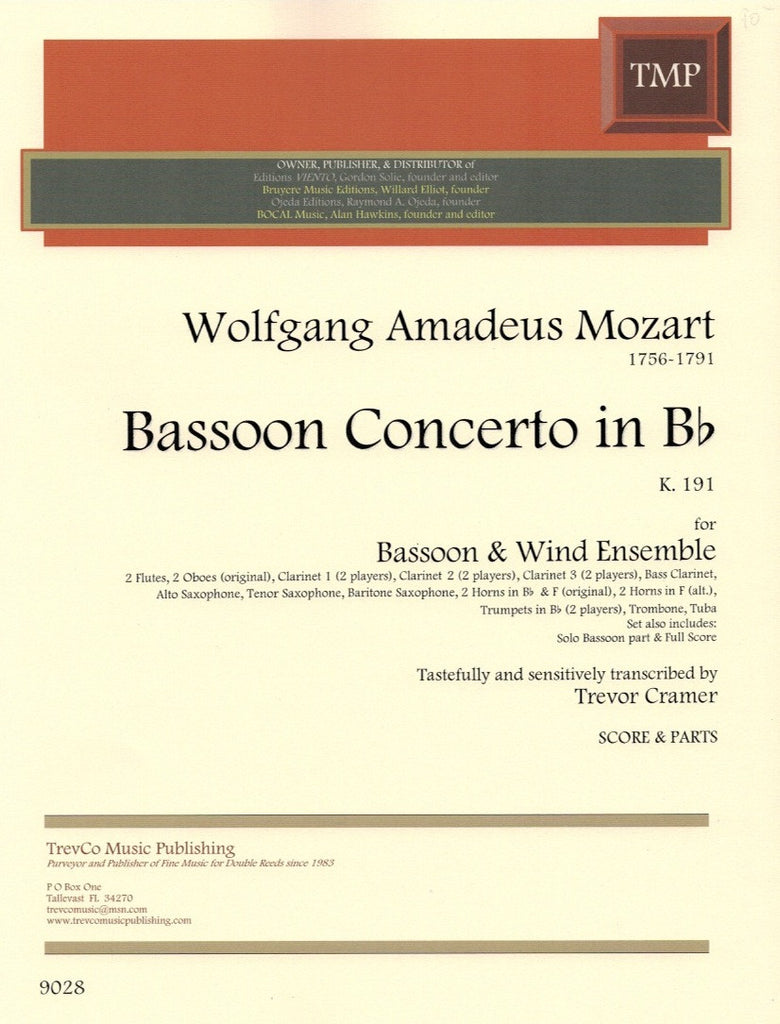
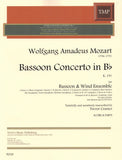
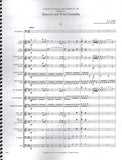
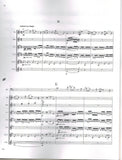
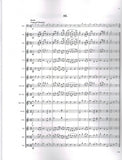
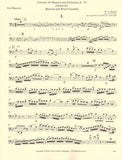
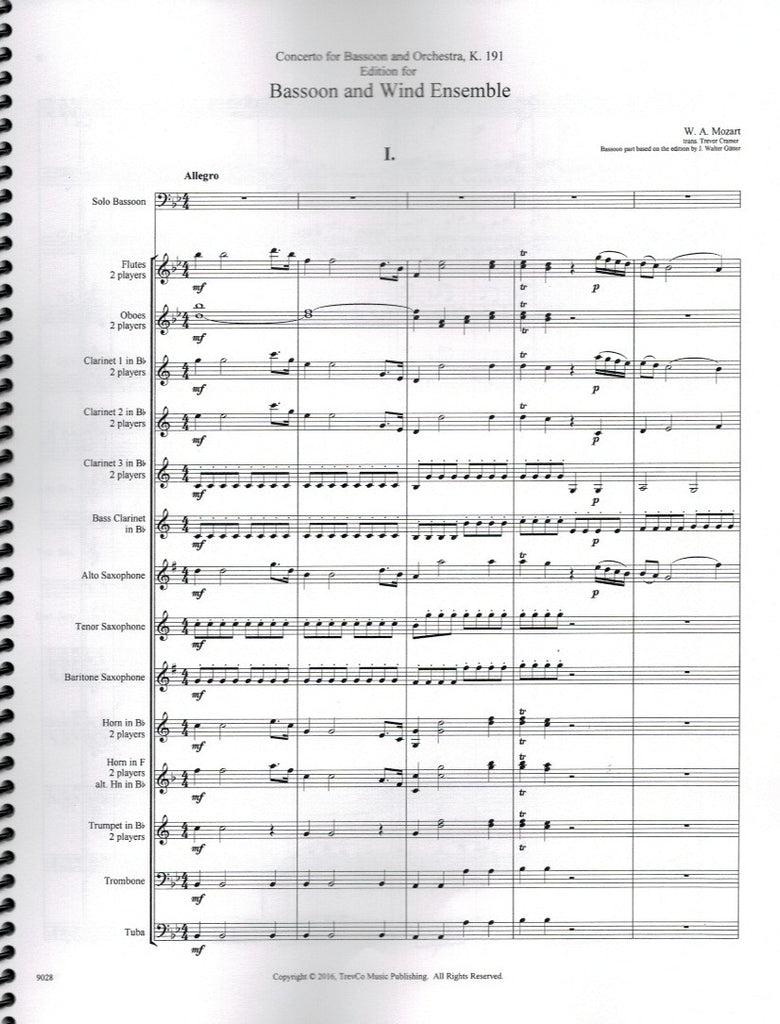
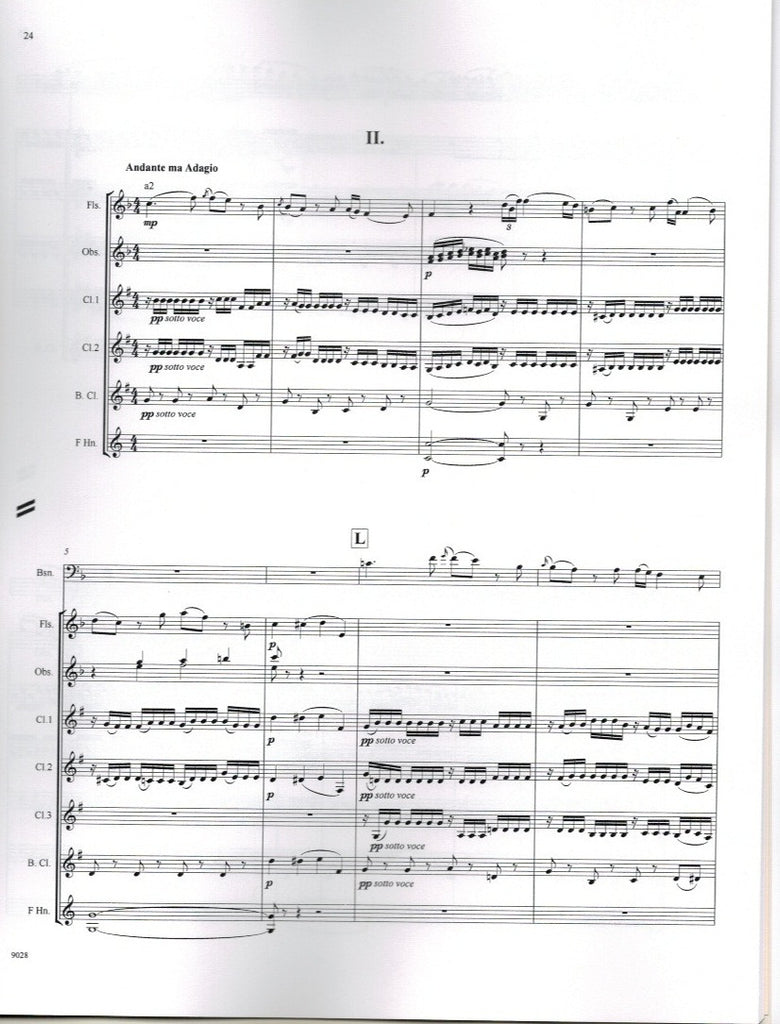
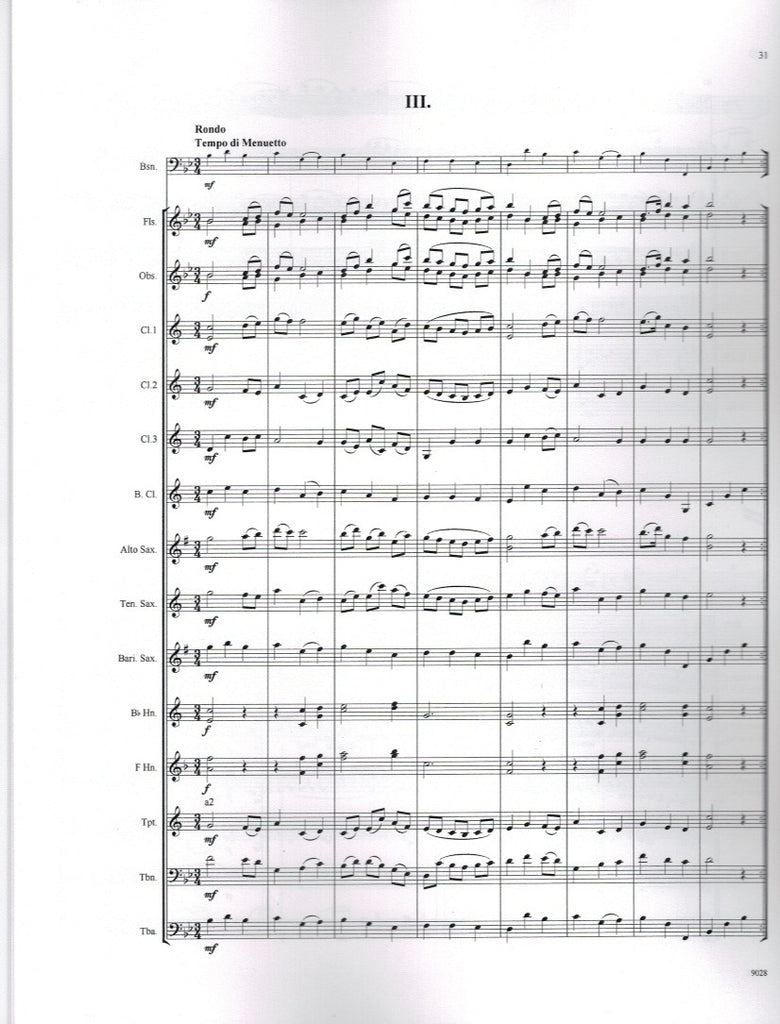
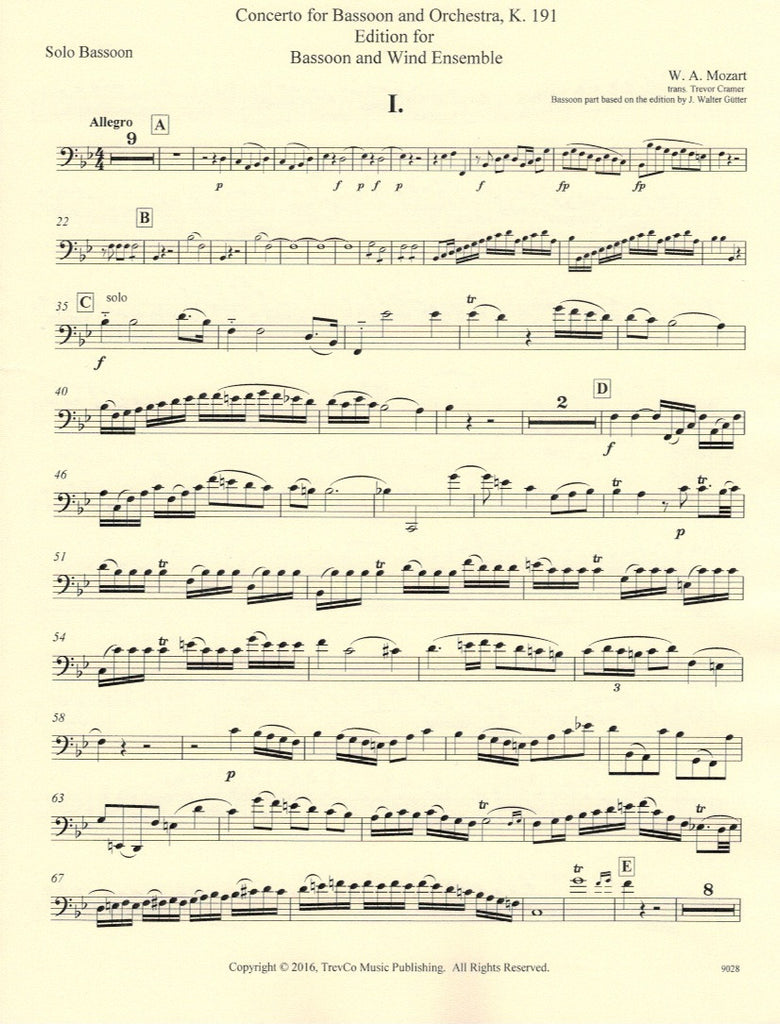
Share this item: